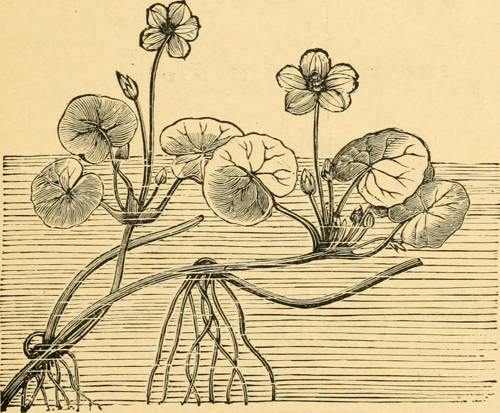
FAQ About Indoor Plant Bracing Techniques

What is the purpose of bracing indoor plants?
Bracing indoor plants helps provide stability and support to the plant structure, ensuring it can grow properly without toppling over. This is especially important for larger plants and climbing species, which may become top-heavy or need guidance as they grow upwards.

When should I consider bracing my indoor plant?
You should consider bracing your indoor plant if it begins to lean sideways, shows signs of instability, or outgrows its pot in a way that may lead to tipping. Climbing plants may also require bracing to guide their growth along a particular path or structure.

What materials can be used for indoor plant bracing?
Common materials for indoor plant bracing include bamboo stakes, wooden dowels, metal rods, and plastic or metal trellises. You can also use soft ties, such as garden twine or velcro plant tape, to secure the plant to the support structure without causing damage.

How do I brace a large indoor plant?
To brace a large indoor plant, select a sturdy stake or pole that can support the plant's weight. Insert the stake into the soil near the plant's base, making sure it is deep enough to be stable. Then gently tie the plant to the stake at multiple points using soft ties. Ensure the ties are not too tight to avoid damaging the plant stem.

Can bracing harm my indoor plant?
Bracing can harm your indoor plant if done incorrectly. Avoid tying the plant too tightly to the support, as this can restrict growth and potentially damage the stem or branches. Additionally, ensure that the support material is not abrasive or sharp, as these can injure the plant.

Are there specific techniques for bracing climbing plants indoors?
Yes, climbing plants can be braced using trellises or wire frames. Guide the vines or stems gently along these structures, attaching them with soft ties as they grow. Position the support close enough to the plant so that the plant can naturally attach and grow around the structure.

What are some signs that an indoor plant needs bracing?
Signs that an indoor plant may need bracing include leaning stems, bending or sagging branches, or if the plant appears to be top-heavy and at risk of tipping over. Other signs may include uneven growth or the plant's inability to stand upright on its own.

How do I know what type of bracing technique to use for my indoor plant?
The type of bracing technique depends on the plant species and its growth habit. For tall, top-heavy plants, a central stake may work best. For climbing plants, a trellis or cage structure is more suitable. Observe how your plant grows naturally and choose a support method that complements its growth pattern.

Can I use household items for indoor plant bracing?
Yes, several household items can be repurposed for indoor plant bracing. Sturdy chopsticks or skewers can be used for smaller plants, while larger plants might benefit from broomsticks or curtain rods. Just ensure any item used is clean and free from sharp edges that might harm the plant.

How often should I check the bracing system of my indoor plant?
You should check the bracing system regularly, ideally every few weeks. Look for signs of wear or instability in the supports and make adjustments as the plant grows. Ensure that ties are neither too tight nor too loose, and that the plant is growing in the desired direction.

Is it necessary to brace all types of indoor plants?
Not all indoor plants require bracing. Bracing is typically necessary for plants that grow tall, become top-heavy, or are natural climbers. Plants with thick, sturdy stems, or those that naturally grow low to the ground generally do not require additional support.

Can bracing help in shaping an indoor plant's growth direction?
Yes, bracing can be used strategically to shape and direct the growth of an indoor plant. By gently securing branches or stems to a support, you can encourage the plant to grow in a particular direction or form, which is particularly useful for ornamental purposes or space management.

What are soft ties, and why are they recommended for plant bracing?
Soft ties are flexible, gentle materials such as garden twine, cloth strips, or velcro plant tape. They are recommended for plant bracing because they are less likely to damage the plant stems or restrict growth, providing necessary support without harming the plant.

How do I brace a climbing indoor plant with a trellis?
To brace a climbing indoor plant with a trellis, place the trellis close to the plant and gently weave or tie the stems onto the trellis using soft ties. As the plant grows, continue to guide it along the trellis, adjusting the ties to accommodate growth and promote even coverage.

What should I do if a braced plant seems stressed or damaged?
If a braced plant shows signs of stress or damage, first check that the ties are not too tight and that the support structure is stable and non-abrasive. Ensure that the plant is receiving adequate light, water, and nutrients, and adjust the bracing setup if necessary to promote healthier growth.

Can bracing indoor plants prevent them from falling over during strong winds or vibrations?
Bracing can significantly reduce the risk of indoor plants falling over during strong winds or vibrations, especially when placed near open windows or in areas with heavy foot traffic. By securing the plant to a stable support, you can minimize potential damage from movement.

Is it possible to over-brace an indoor plant?
Yes, over-bracing an indoor plant can be detrimental. If the plant is too tightly secured, it may lead to restricted growth, reduced air circulation, and potential damage to the plant tissues. It's important to allow the plant some freedom of movement within its braces for optimal health.

What role does pot size play in the need for bracing indoor plants?
Pot size plays a critical role in the stability of indoor plants. A plant in a pot that is too small may become top-heavy more quickly and require bracing sooner. Conversely, a larger pot can provide more stability and may delay the need for additional bracing.

How can I tell if the bracing technique is effective on my indoor plant?
An effective bracing technique will keep your indoor plant stable and upright without restricting its growth. Look for steady growth patterns, minimal leaning or sagging, and a healthy appearance in the plant's leaves and stems. Adjustments might be needed as the plant grows.

What should I consider before removing braces from an indoor plant?
Before removing braces, ensure that the plant is capable of supporting itself independently. This often means checking the strength and thickness of the plant stems or making sure a climbing plant has sufficiently adhered to its support. Remove the braces gradually to monitor the plant's stability.
